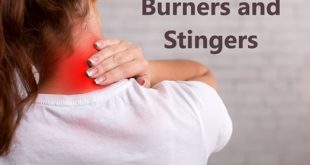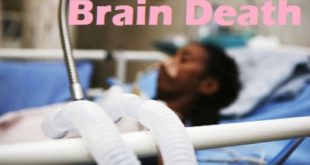Definition
Baby acne is just like the acne that many suffer from their teens and twenties. Baby acne can pop up anywhere on your newborn’s body, but it’s most often seen on their cheeks and back. Baby acne is also known as neonatal acne. The condition, which is usually treatable, occurs in about 30 percent of newborns. It is different from infantile acne in that open “blackheads” don’t usually appear in baby acne.
This skin condition normally becomes visible within two to four weeks of your baby’s birth. That said, some newborns have acne when they’re born. It may also affect infants at any point during their first several months of life.
Baby acne
Epidemiology
Infantile acne is relatively uncommon and affects less than 2% of children. Relatively recent data derived from the outpatient pediatric population of the United States from 2000 to 2010 revealed that approximately 9.2 million ambulatory clinical visits each year were attributed to pediatric acne alone, with neonatal and infantile acne accounting for 3% of all cases. Infantile acne can affect either sex but has a higher predominance in males.
Types of Baby acne
There are two types of acne occurring in babies: Neonatal acne and infantile acne.
Neonatal acne
If your baby has acne before six weeks of age, doctors refer to it as neonatal acne. About 20 percent of newborns develop this type, and it mostly affects boys. Some may even have it from the moment they enter the world.
Doctors, nonetheless, don’t consider this true acne, but more on that below.
Neonatal acne generally appears on the face on the forehead, cheeks, and chin. Sometimes it runs down the back or chest.
The affected areas may look bumpy and oily, much like they would on an adult. Still, the breakouts can also simply appear as small red dots.
Infantile acne
If your baby is between three and 16 months, doctors call it infantile acne. This type is less common, affecting approximately 2 percent of babies. But, much like neonatal acne, boys are more likely to develop it.
Infantile acne is a bit different from the baby acne most of us know. Your baby may still have red and whitish bulges, but blackheads and nodules can also appear. These typically surface in clusters, and the bumps may contain pus.
Infantile acne usually runs its course. However, in rare cases, it can be persistent and difficult to get rid of. And unlike neonatal, this type is generally viewed as true acne.
Causes of Baby acne
When your new-born baby is around 2 to 5 weeks old you may start to see small pimples on his face, usually on his cheeks, nose, eyelids, chin, and/or forehead. Baby acne is also referred to as neonatal acne and is common about 3 in 10 babies get it.
Experts are not exactly sure what causes baby acne, but it could be due to one of the following:
- An inflammation caused by yeast on your baby’s skin
- Overstimulated oil glands in your baby’s skin caused by coming into contact with hormones in the placenta during your pregnancy.
Baby acne has nothing to do with the type of acne that a teenager may experience.
Baby acne symptoms
It is temporary and typically develops within two to four weeks after an infant is born and lasts several days or weeks. In some cases, baby acne can last for several months.
Symptoms of baby acne, which may be more pronounced when a baby is crying or fussy, include:
- Red pimples
- Rough, bumpy rash
- Small white pustules or whiteheads
Complications
- Skin infection, with deeper, larger, painful area of redness, possibly with drainage of pus.
- Acne rash appearing after 2 months old that has blackheads and more severe pimples is a more serious condition that needs to be evaluated and treated.
What if it’s not baby acne?
There are some skin conditions that can mimic baby acne. Here are some of the most common:
Milia: These are tiny white bumps that tend to show up about the same time as baby acne. They’re caused by skin flakes getting trapped near the surface of the skin, usually on the nose, chin, or cheeks. These are also harmless and do not require any treatment.
Erythema toxicum: This is a larger red area with overlying white or yellow bumps. It tends to appear in the first 1-2 weeks of life and goes away within a week or so without any treatment.
Eczema: This is a red, scaly, bumpy rash that may appear flaky. It shows up on baby’s faces but can also be anywhere else on the body, especially on the knees and outside of elbows. It tends to be quite itchy.
Heat rash: This is caused by blocked pores trapping sweat under the skin. It tends to happen in areas that get hot and sweaty, such as the neck, arm pits, and creases of elbows, knees, wrists, and feet.
Cradle cap: The scalp is where you are most likely to find cradle cap, which looks like scaly or crusty patches. They tend to look greasy and might be white or yellow.
Diagnosis and test
In most babies with acne, no investigations are necessary. In older children, or if there are other signs of virilisation, the following screening tests may be useful.
- Blood tests: DHEAS, testosterone, 17-hydroxyprogesterone, LH, FSH, prolactin
- X-ray: bone age measurement
Treatment
The best way to deal with baby acne is simply to be patient, and not apply or do anything that could make your baby’s acne worse. After all, baby acne should eventually clear up on its own.
Follow these tips for caring for baby’s acne:
- Never apply an acne-specific medicine, cream, lotion or wash to baby’s face unless a pediatrician or dermatologist recommends it. Many adult and teen treatments are too harsh for baby’s sensitive skin, and could make acne worse.
- Wash baby’s acne areas twice a day with warm (not hot) water. You can use a soft washcloth to pat or gently sweep these areas in circles, but be very gentle, and do not scrub. Too much rubbing/scrubbing could irritate the acne areas.
- Stay away from harsh soaps, and stay away from any products with fragrances. Only use water and mild soap-free washes designed for babies on baby acne areas.
- Do not use lotions, or any oily products
- Never squeeze or pick at acne.
- Make sure that baby doesn’t pick at their own acne have them wear baby mittens or socks on their hands if needed.
- Also, never scrub or rub acne.
- If baby’s acne seems especially stubborn, your pediatrician may prescribe a medicated cream or ointment. Ask your doctor about these treatments if you think they may be needed. Use the treatment exactly as your doctor directs you to, if one is prescribed.
Prevention of Baby acne
Some of the things you can do to prevent baby acne or at least keep it from getting worse:
- Be gentle with the baby’s skin, especially when taking a bath. If your baby is already experiencing acne, avoid scrubbing the affected area to avoid causing irritation, and to help it heal faster.
- Use lukewarm water when washing your baby’s skin.
- As much as possible, use a mild soap, fragrance-free or a soap-free cleanser when washing your baby’s skin. It may be best to ask your doctor for product recommendations to know what’s best for your baby’s skin type.
- Avoid using adult acne products such as those with erythromycin or retinoids on your baby’s skin as they may be too strong and may cause further skin issues.
- Avoid using oily or greasy products that may aggravate baby acne. It’s also best to skip the lotion and heavy creams.
- Most of all please do not squeeze baby acne as this many only irritate your baby’s skin, cause scarring and/or just make it worse.
 Diseases Treatments Dictionary This is complete solution to read all diseases treatments Which covers Prevention, Causes, Symptoms, Medical Terms, Drugs, Prescription, Natural Remedies with cures and Treatments. Most of the common diseases were listed in names, split with categories.
Diseases Treatments Dictionary This is complete solution to read all diseases treatments Which covers Prevention, Causes, Symptoms, Medical Terms, Drugs, Prescription, Natural Remedies with cures and Treatments. Most of the common diseases were listed in names, split with categories.







I gave birth on January, April i started seeing red rashs on her body i took her to the hospital which they did probable check up her prescribed some drugs and ask me to use triple action, and since dem i have been looking for solution not found it keeps on coming more please i need a remedy that we put a stop. thanks